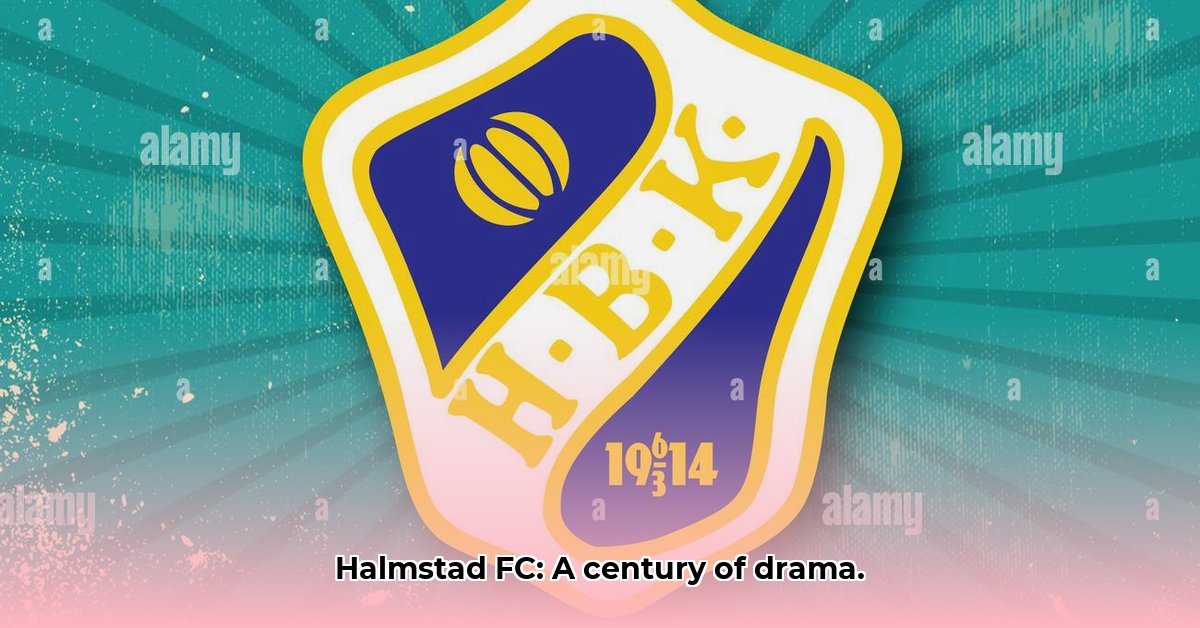
A Century on the Pitch: From Bandy to the Allsvenskan
Halmstad FC, celebrating its centenary, is more than just a football club; it's a vital thread in the rich tapestry of Halmstad's history. Established in 1914, the club's early days weren't solely focused on football. Initially a multi-sporting entity, encompassing bandy, athletics, and even boxing, it reflected the diverse sporting landscape of the era. Football, however, eventually rose to prominence, captivating the hearts of Halmstad's residents and establishing itself as a cornerstone of the club's identity. While detailed records from this formative period are scarce, the club's longevity speaks volumes about its enduring appeal and resilience. They've weathered countless storms, much like an ancient oak standing firm against the fiercest winds.
The narrative of Halmstad FC is deeply interwoven with its intense rivalry with IS Halmia. This wasn't merely a sporting contest; it was a legendary feud, generating electrifying matches and even contributing to the birth of other local clubs. The atmosphere during these encounters was electric, a true David versus Goliath struggle played out on Halmstad's hallowed turf, shaping the club's competitive spirit and leaving an indelible mark on its identity. This fierce rivalry is a significant component of Halmstad FC's story, fueling its passionate fanbase and defining its competitive edge.
Halmstad FC's journey through the Allsvenskan (Sweden's top football league) has been a rollercoaster of highs and lows. They've tasted the sweet victory of four national titles and also claimed the national cup. But the path hasn't been smooth; relegation battles have tested their mettle, demonstrating that even the most successful teams face setbacks. But what accounts for these fluctuations? It's likely a complex interplay of factors – player talent, managerial decisions, a degree of fortune, and perhaps even the phases of the moon! This makes their trajectory so compelling, and understanding their story requires analysing all these components.
World War II significantly impacted Swedish football, and Halmstad FC was no exception. Mobilization and wartime restrictions presented considerable challenges, affecting their performance and squad composition. This sobering reminder underscores how external events can shape even the most committed club’s history.
One particularly brilliant moment in Halmstad's history was their participation in the Cup Winners' Cup in 1995. This European adventure catapulted them onto the global stage, representing a pinnacle of their achievement and setting a benchmark for future ambitions. This remains a cherished memory, driving their ongoing aspirations for further triumph.
In today's rapidly evolving football world, Halmstad FC faces new challenges. Maintaining competitiveness in the Allsvenskan demands constant adaptation and innovation. So, what's the key to future success? Professor Lars Andersson, Sport Management, Lund University, argues that "A robust youth academy, nurturing young talent, is paramount. Equally crucial is cultivating strong ties within the community and fostering enduring supporter engagement. Navigating the contemporary football landscape is a complex undertaking, and success hinges on adept management of these intertwining factors."
Understanding Halmstad BK's Allsvenskan Fluctuations
Key Takeaways:
- HBK demonstrates remarkable squad stability, yet Allsvenskan results remain inconsistent.
- This highlights the nuanced relationship between player retention and on-field performance.
- HBK's consistent low player turnover may indicate limited squad depth.
- Enhancing away form and goal-scoring efficiency are vital for future progress.
The Stability Paradox: Consistent Players, Inconsistent Results
HBK's consistent high ranking in Allsvenskan player retention presents a fascinating paradox. One might anticipate that this stability would translate into predictable, high-level performance. However, HBK’s performance has demonstrated otherwise. A strong home record co-exists with an underperforming away record. What is the missing link? Is the stability of the team itself the issue? Dr. Annika Olsen, Sports Psychologist, Gothenburg University, suggests that, "While familiarity breeds efficiency on the field, it can also lead to complacency and a lack of strategic flexibility."
Maintaining the same players for extended periods fosters team cohesion and established playing relationships. Players understand each other's moves, anticipating actions with greater ease. However, a lack of new talent can hinder innovation and the exploration of alternative tactical approaches, limiting the team's potential for growth and adaptation to varying opponents.
Analysing the Statistics: A Deeper Dive into Performance
Statistical analysis reveals a complex picture. While HBK's player retention is noteworthy, its direct impact on Allsvenskan results is less straightforward. Goal-scoring efficiency requires improvement, particularly given their inconsistent away form. This underscores the necessity of a multifaceted approach to improving performance – rather than merely focusing on the retention of players, a deeper analysis of team dynamics and tactical adjustments is necessary.
Future Prospects: A Path Towards Consistent Success
Understanding HBK’s fluctuating Allsvenskan performance requires a holistic view. It’s not simply about retaining players, but also about strategically managing squad depth, adjusting tactics effectively, and enhancing goal-scoring efficiency. This necessitates a thorough examination of team dynamics, player development, and smart recruitment strategies. Sustained achievement requires a broad approach, recognising that success isn't solely dependent upon familiar faces on the team sheet. Can HBK maintain its core while injecting the dynamism needed to consistently compete for top positions? Only time will tell.